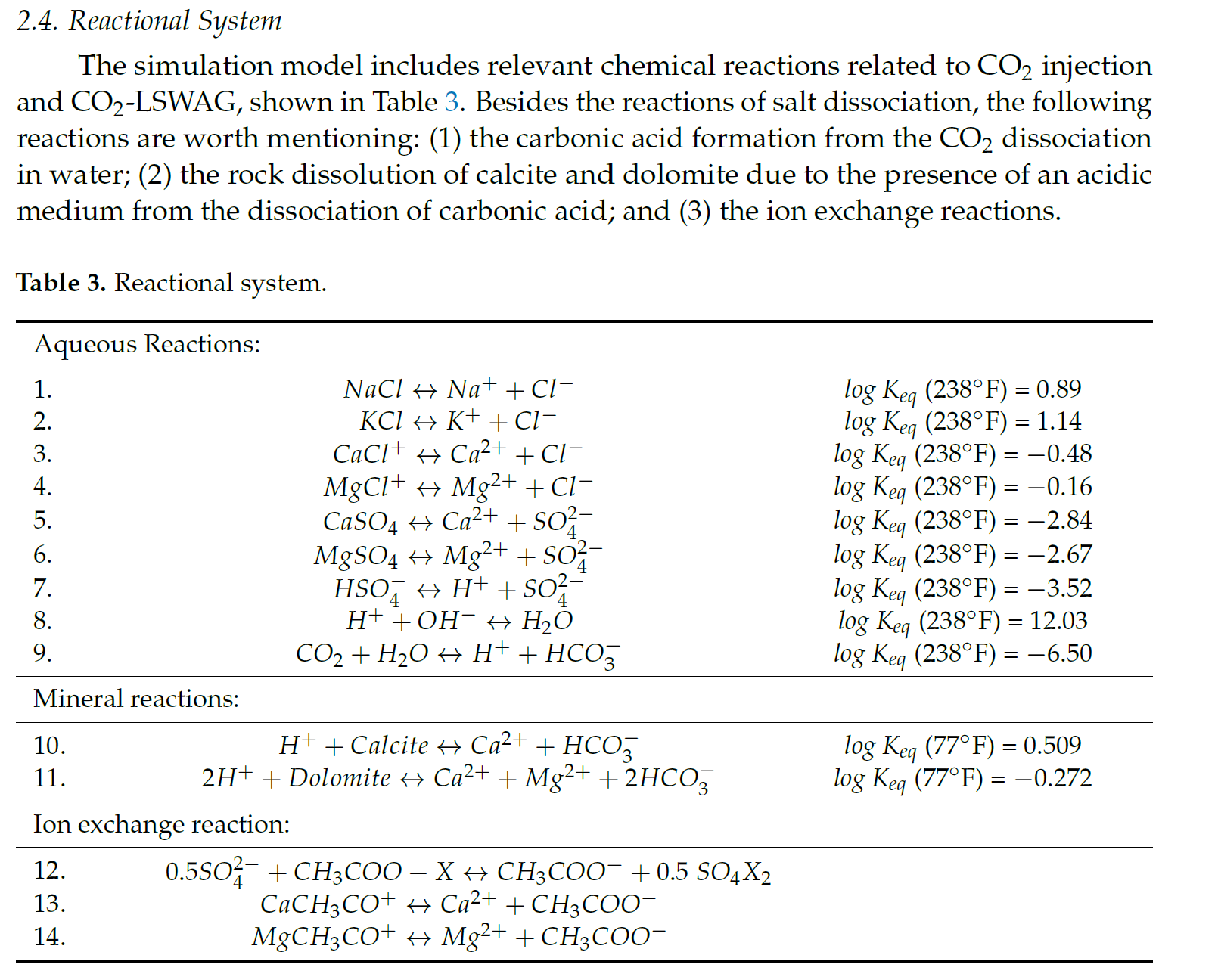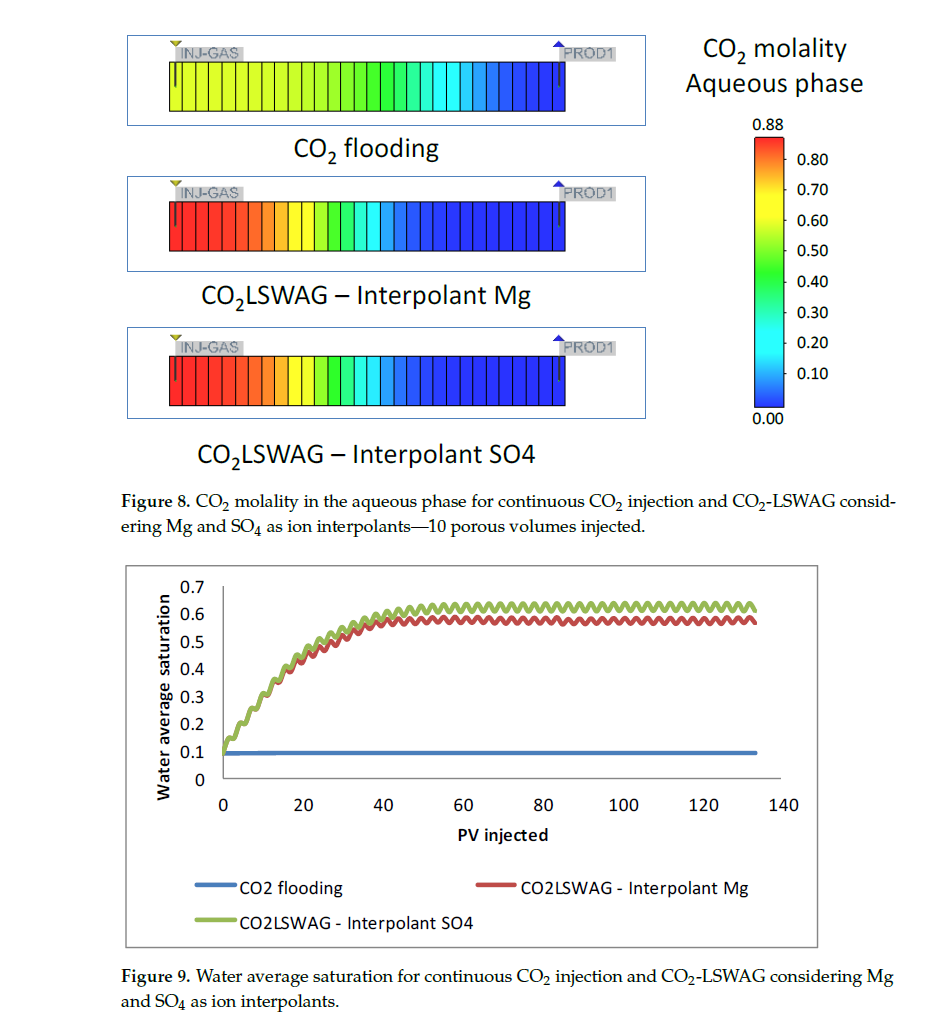A Comprehensive Simulation Study of Physicochemical and Geochemical Interactions on Immiscible CO2-LSWAG Injection in Carbonates
Abstract
Low-salinity water-alternating-CO2 (CO2-LSWAG) injection has been widely studied and employed due to its capability to promote enhanced oil recovery (EOR). However, there is no consensus on the dominant mechanisms for oil recovery in carbonates due to the extreme complexity of the oil–brine–rock interactions. This work proposes a comparative investigation of the physicochemical and geochemical effects of continuous CO2 and CO2-LSWAG immiscible injections on oil recovery in a carbonate core. Simulations were carried out using oil PVT properties and relative permeability experimental data from the literature. A comparison of SO42− and Mg2+ as interpolant ions, oil, water and gas production, pressure, and rock and fluid properties along the core and in the effluent was made. The results show a high recovery factor for CO2 (62%) and CO2-LSWAG (85%), even in immiscible conditions. The mineral dissolution and porosity variations were more pronounced for CO2-LSWAG than CO2. The simulation results showed that Mg2+ as an interpolant improves oil recovery more than SO42− because Mg2+ concentration in the aqueous phase after LSW injection leads to relative permeability values, which are more favorable.
Keywords:
immiscible CO2; CO2-LSWAG; carbonate; physicochemical simulation; geochemical simulation; interpolants




